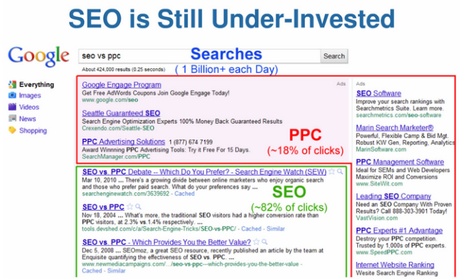My friend has an interview on Tuesday for a marketing manager role, and has never done any online marketing, so here goes my introduction to it…
Internet Marketing Jargon
Online marketing has so many abbreviations, that if you don’t know them, it sounds like another language
What is a “Browser”?
A browser is Internet Explorer, Google Chrome, Firefox, Safari on an Apple device or Opera. It’s a piece of software for navigating the internet and downloading/rendering websites.
DO NOT say that you use Internet Explorer in an online marketing interview. Say that you use Chrome.
The main reason that people use Chrome and Firefox is that you can get plugins/extensions for Google Chrome. The most popular in online marketing is probably the ‘Mozbar’ which helps you see the ‘Domain Authority’ of a website.
What is a CMS?
Content Management System. A typical CMS is WordPress. This site is made using the free version of wordpress that uses the WordPress hosting platform, a free design template. The wordpress software can also be used when hosted with a different company such as GoDaddy, and the paid WordPress software allows plugins.
What are “WordPress Plugins”?
They are add-ons to your site that allows you to add ‘functionality’. For example you might add a Paypal plugin that allows you to create a shopping cart and payment system on your site to make in an online shop/ecommerce site.
What does “SEO” Stand For?
Search Engine Optimisation. This is the process of ranking as high as possible on Google and other search engines such as Bing.com.
What does “CRO” Stand for?
Conversion Rate Optimisation. This is the process of getting people who visit your website to buy things or sign up for a newsletter or submit a form. If you have an online shop, a ‘conversion’ would normally be a purchase on your website.
What does “PPC” Stand for?
Pay Per Click advertising (not Payment Protection Cover as I thought in my interview at the bank I used to work at). The 2 most popular forms of this are Google Adwords and Facebook advertising. Facebook is usually more effective on a smaller budget.

What is HTML?
HTML stands for hyper text markup language. It structures websites whilst something called CSS – Cascading Style Sheets.
The best place to start learning HTML is w3 Schools. It can be overwhelming at first, but it’s easy when you get the hang of it. It’s just a load of numbers and letters inside angle brackets <> to remember. There’s no working out or formulas to remember, just letters and numbers.
HTML is one of the ways a websites ‘talks’ to a browser, so that the browser can render the website and show you what’s on there.
CSS makes it looks nice, adding colours, styles etc. For example the CSS might tell the browser to make all the main headings red and all the list items italic.
What is DA?
DA stands for Domain Authority. DA is an indication of how ‘powerful’ or authoritative a website is. The higher the DA (score of 1-100), the more valuable a link is from that website.
What is a Link?
A link or a hyperlink is a bit of text or an image, that you click to go to another website. For example this red underlined text is a link to a fitness blog. When you click it, you should be taken to another blog.
The more links a website has, from high quality websites, the more likely it is to rank higher in Google. You can gain links by creating great content, you can create and run marketing campaigns that people will want to write about, or you can be naughty and pay for some links.
What is Guest Posting?
Guest posting is an old school tactic to gain links to your website and rank on Google. You create an article/blog post, send it to a blogger in an email and ask if they would like to use it on their website. The article will contain a link back to your own website. The typical response from a blogger is either “no thanks” or “okay, that will cost $50”.
Now, this is against Google guidelines and you can get penalised by Google for doing this. People still do though. In theory, if a blogger accepts a payment to link to another website, in any form, whether it is via a blog post or sidebar-link or banner, then it should be a ‘no-follow’ link.
What is a NoFollow Link?
A no follow link has the HTML code – rel=”nofollow” added to it.
This tells Google NOT to count this link and not factor it in to it’s ranking algorithm.
What is the Google Algorithm?
It’s the formula that Google uses to work out where to rank websites on their results pages. Apparently nobody knows all of it, but it looks at how many other websites link to yours, the quality of the websites linking to yours, the quality of your website and its content and how fast your website loads.
What are Keywords?
Keywords or KWs, are search terms used in Google. If I search for “Red apples” then the keyword is “red apples”.
Rather confusingly, search phrases are also called keywords. You want to find KWs with lots of monthly searches, that don’t have lots of competition and add them to your content and headings in a natural format. Don’t stuff them in everywhere.
Use the Keyword Planner Tool to find KWs with lots of monthly searches. And do a Google search to see which websites rank for those terms. If the top 10 websites for that KW are the likes of the BBC, Fox News and Amazon, you probably aren’t going to rank on the first page for that term.
Long Tail Keywords are less popular KWS, with less searches but often ‘convert’ to sales etc. better.
A Head Term might be “Tennis Balls”
A Long Tail Keyword might be “Buy Yellow Slazenger Tennis Balls UK”
“Tennis Balls” will have a much higher volume of monthly searches but will be very hard to rank on the first page of Google for. “Buy Yellow Slazenger Tennis Balls UK” will have less search volume each month, but will be easier to rank for and people searching for that term are more likely to buy/convert.
Tools for Internet Marketing
A CMS – such as WordPress so that you can create a website
A Keyword Tool such as the Google Keyword Planner. So that you can see what keywords to try and rank for or advertise with if you’re using PPC ads.
Google Analytics – to see who is coming to your site, where from and to what pages.
Google Chrome and some extensions such as the Moz Bar
Screaming Frog for Technical SEO. This gets all the information from a website and downloads it into an Excel Spreadsheet.


